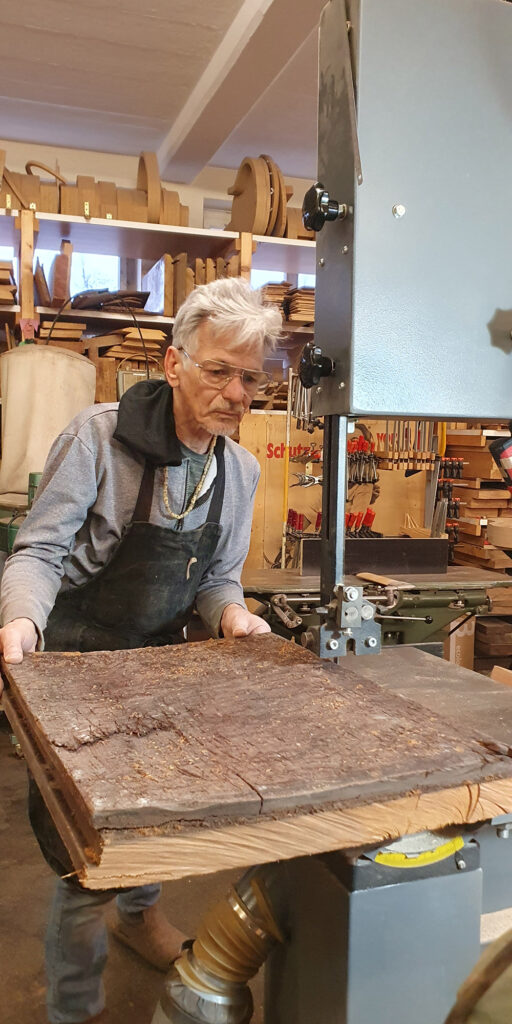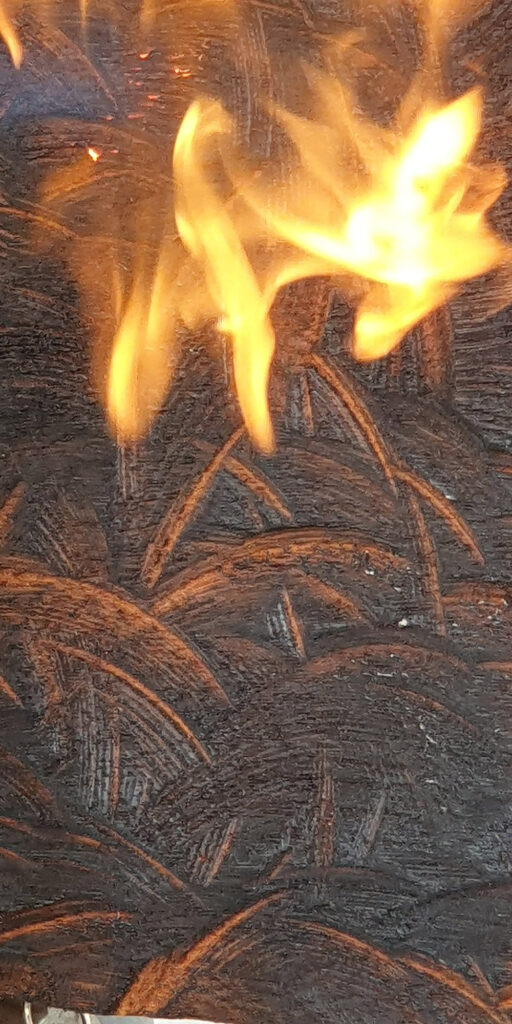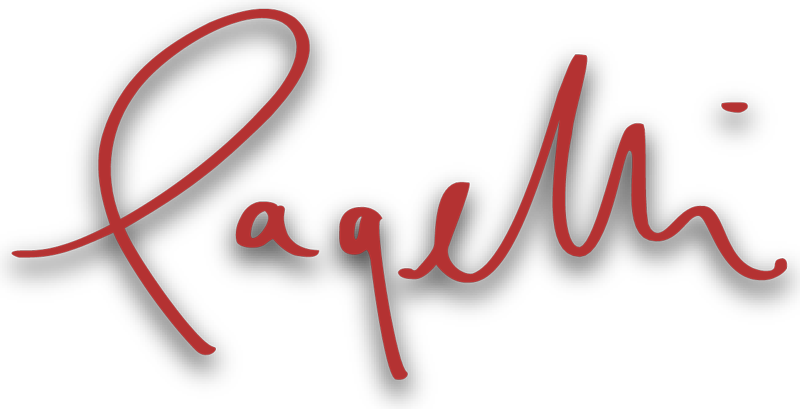The roughly designed and archaic front is meant to represent the enormous destruction – earthquake and tsunami – and the fire-blackened wood the brute conflagration.
The inlaid aluminium on the one hand is reminiscent of barrel rims, and of the destructive force of nature that can bend metal with playful ease on the other. In addition, the upper bow, with its downward sweep towards the fingerboard, symbolizes the power of a tidal wave and its merciless undertow. The curved head also echoes the wave shape.
We left the back of the instrument raw with the visible axe notches of the barrel staves. Here we wanted to achieve a fusion of craftsmanship and history: Two men working the same piece of wood – front and back – as if face to face… in a 250 year gap!
Therefore, we finally chose a form that is emphatically simple and presents the wood prominently, not disturbed by a guitar shape.
To adhere to the construction methods of the time, we did not use screw connections. Everything is joined.
The revolutionary Truetemperament fingerboard reminded us of wave formations and likewise the power of natural events that seemingly effortlessly deform given things.
And we chose tuners that were mounted in a similar way on instruments of the 18th century.
Their simplicity and arrangement resemble grave crosses which are symbolic of the many who have died.
But the unconventional guitar as a whole meant to represent a sense of opportunity, of a future that promises that something new will emerge again, that well-trodden paths can be left behind and that there is room for new unconventional thoughts.
And that is why our guitar looks like this.




























